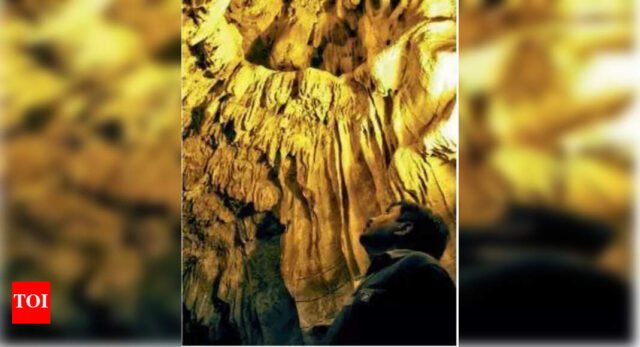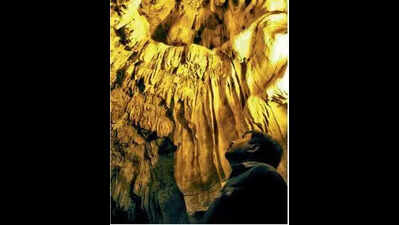Vijayawada: The world-renowned Belum Caves, located in Kolimigundla mandal of Nandyal district, have officially been recognised as a geo-heritage site by the Geological Survey of India (GSI). These caves are celebrated as the second longest natural underground cave system in the world and the longest in India, marking a significant milestone in their preservation and promotion as a historic and geological marvel.Discovered in 1884Historical records indicate that the Belum Caves date back to 450 BCE, once serving as residential spaces. Their archaeological and spiritual significance has long been acknowledged. The caves were first discovered in 1884 by British geologist Robert Bruce Foote. Later, between 1982 and 1984, German speleologist HD Gebauer, along with his team, explored nearly 3,225 metres of the cave system and produced a detailed map. Recognising their historical value, the archaeology department of Andhra Pradesh declared the site protected in 1988. In 1999, the then united Andhra Pradesh govt, under the leadership of chief minister N Chandrababu Naidu, brought the caves under the jurisdiction of the tourism department to develop them as a tourist destination.The Belum Caves extend through 23 acres of land and feature a complex network of tunnels and chambers that begin approximately 10 metres below ground and continue to depths of up to 30 metres. Visitors must descend 40 steps to enter the caves, which are characterised by narrow passageways, vast chambers, and spectacular natural formations like stalactites and stalagmites. Several rock formations within the caves have been creatively named based on their appearance — such as “Thousand Hoods,” “Kotilingalu,” “Airavatham,” “Meditation Hall,” and “Mayamandiram.“Consistent temperature At the far end of the caves lies the “Patalaganga,” an underground water spring, alongside a naturally formed Shiva Lingam embedded in rock, enhancing the site’s spiritual importance. Interestingly, the cave maintains a consistent internal temperature of 33°C throughout the year with high humidity. Researchers also believe there is a hydrological connection between the cave’s underground water and a stone well near a local temple in a nearby village. Moreover, the water table of the Penna River, situated about 30 km away near Tadipatri, appears to influence the caves’ water flow.In 1999, the A P tourism department initiated a large-scale development project to enhance the cave’s accessibility and appeal. A 1.5 km walking path was cleared and constructed using gravel, and over 150 electric lamps were installed to illuminate the path inside the caves. Air blowers were also added to regulate air circulation. These efforts transformed the Belum Caves into a significant tourist attraction, drawing more than two lakh visitors annually, including hundreds of foreign tourists. The tourism department generates approximately 1.5 crore in annual revenue from the site. Following the GSI’s designation of the caves as a Geo-Heritage Site, district authorities organised a special event named “Yogandra” on Friday at the cave premises, featuring mass yoga sessions with participation from officials, local staff, and the public.Plans to publicise Nandyal district tourism officer Satyanarayana emphasised that such initiatives are crucial in expanding the site’s outreach and drawing greater tourist attention. The department of tourism plans to further publicise the caves to attract more national and international tourists.Tourism minister Kandula Durgesh expressed his delight over the GSI’s recognition, highlighting the caves’ historical, geological, and cultural significance.









